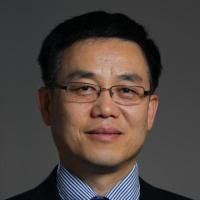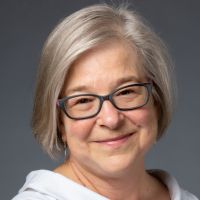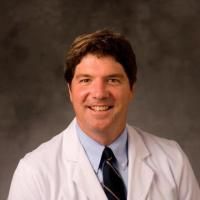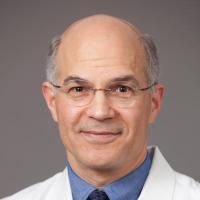Interleukin-9 mediates chronic kidney disease-dependent vein graft disease: a role for mast cells.
Date
2017-11-01
Journal Title
Journal ISSN
Volume Title
Repository Usage Stats
views
downloads
Citation Stats
Abstract
Aims: Chronic kidney disease (CKD) is a powerful independent risk factor for cardiovascular events, including vein graft failure. Because CKD impairs the clearance of small proteins, we tested the hypothesis that CKD exacerbates vein graft disease by elevating serum levels of critical cytokines that promote vein graft neointimal hyperplasia. Methods and results: We modelled CKD in C57BL/6 mice with 5/6ths nephrectomy, which reduced glomerular filtration rate by 60%, and we modelled vein grafting with inferior-vena-cava-to-carotid interposition grafting. CKD increased vein graft neointimal hyperplasia four-fold, decreased vein graft re-endothelialization two-fold, and increased serum levels of interleukin-9 (IL-9) five-fold. By quantitative immunofluorescence and histochemical staining, vein grafts from CKD mice demonstrated a ∼two-fold higher prevalence of mast cells, and a six-fold higher prevalence of activated mast cells. Concordantly, vein grafts from CKD mice showed higher levels of TNF and NFκB activation, as judged by phosphorylation of NFκB p65 on Ser536 and by expression of VCAM-1. Arteriovenous fistula veins from humans with CKD also showed up-regulation of mast cells and IL-9. Treating CKD mice with IL-9-neutralizing IgG reduced vein graft neointimal area four-fold, increased vein graft re-endothelialization ∼two-fold, and reduced vein graft total and activated mast cell levels two- and four-fold, respectively. Treating CKD mice with the mast cell stabilizer cromolyn reduced neointimal hyperplasia and increased re-endothelialization in vein grafts. In vitro, IL-9 promoted endothelial cell apoptosis but had no effect on smooth muscle cell proliferation. Conclusion: CKD aggravates vein graft disease through mechanisms involving IL-9 and mast cell activation.
Type
Department
Description
Provenance
Citation
Permalink
Published Version (Please cite this version)
Publication Info
Zhang, Lisheng, Jiao-Hui Wu, James C Otto, Susan B Gurley, Elizabeth R Hauser, Sudha K Shenoy, Karim Nagi, Leigh Brian, et al. (2017). Interleukin-9 mediates chronic kidney disease-dependent vein graft disease: a role for mast cells. Cardiovasc Res, 113(13). pp. 1551–1559. 10.1093/cvr/cvx177 Retrieved from https://hdl.handle.net/10161/15737.
This is constructed from limited available data and may be imprecise. To cite this article, please review & use the official citation provided by the journal.
Collections
Scholars@Duke

Lisheng Zhang
My research efforts involves studying the pathogenesis of vein graft neointimal hyperplasia and atherosclerosis.
The greatest amount of my time in the past years has been devoted to developing and characterizing our interposition vein graft model in mice. This model allows us to use IVC to carotid artery transplants between congenic mice. These transplants allow us to ask the questions about which gene products contribute to the pathogenesis of vein graft disease. In addition, I have used carotid artery to carotid artery transplants to study the role of TNF receptors in atherosclerosis. For these studies, we have used apolipoprotein E-deficient mice as graft recipients.
By using mouse vein graft model we demonstrate that most of the neointimal cells in vein grafts originate from cellular pools outside of the vein graft at the time of its implantation. The importance of this work relates to our persistent inability to treat vein graft disease in human beings. The second work demonstrates that expression of the tumor necrosis factor receptor-1, even in just in the vein graft cells themselves, contributes to the pathogenesis of vein graft neointimal hyperplasia. In this project, I surgically created chimeric mice to demonstrate molecular mechanisms by which the tumor necrosis factor receptor-1 aggravates neointimal hyperplasia, a process that is believed to lay the foundation for accelerated atherosclerosis in vein grafts.
I have also adapted my vein graft procedure in mice to ask questions about the arterial wall’s role in atherosclerosis. This atherosclerosis model involves making carotid interposition grafts not with veins, but with the carotid artery of congenic mice, and placing them into the carotid artery of spontaneously atherogenic mice that are deficient in apolipoprotein E.
I plan to continue our studies related to the role of inflammatory cytokine receptors in neointimal hyperplasia and atherosclerosis. In addition, I envision extending this work with the surgical models I have created in mice.

Elizabeth Rebecca Hauser
The incorporation of personalized medicine to all areas of human health represents a turning point for human genetics studies, a point at which the discoveries made have real implications for clinical medicine. It is important for students to gain experience in how human genetics studies are conducted and how results of those studies may be used. As a statistical geneticist and biostatistician my research interests are focused on developing and applying statistical methods to search for genes causing common human diseases. My research programs combine development and application of statistical methods for genetic studies, with a particular emphasis on understanding the joint effects of genes and environment.
These studies I work on cover diverse areas in biomedicine but are always collaborative, with the goal of bringing robust data science and statistical methods to the project. Collaborative studies include genetic and ‘omics studies of cardiovascular disease, health effects of air pollution, genetic analysis of adherence to an exercise program, genetic analysis in evaluating colon cancer risk, genetic analysis of suicide, and systems biology analysis of Gulf War Illness.
Keywords: human genetics, genetic association, gene mapping, genetic epidemiology, statistical genetics, biostatistics, cardiovascular disease, computational biology, diabetes, aging, colon cancer, colon polyps, kidney disease, Gulf War Illness, exercise behavior, suicide

Sudha Kaup Shenoy

Jeffrey Harold Lawson
The research interests of my laboratory include the study of vascular biology and cellular differentiation of vascular tissue, the proteolytic and cell mediated regulation of blood coagulation, inflammatory mediated thrombosis, and the development of bioengineered blood vessels. The clinical interests of my laboratory include the study of novel therapies for vascular and cardiovascular surgery, thrombosis related to surgical procedures, clinical inhibitors of blood coagulation proteases, and the study of the immune response to biologics used in surgery.

Neil Jonathan Freedman
Our work focuses on atherosclerosis-related signal transduction and the genetic bases of atherosclerosis and vein graft failure, both in vitro and in vivo. We investigate the regulation of receptor protein tyrosine kinases by G protein-coupled receptor kinases (GRKs), and the role of GRKs and β-arrestins in atherosclerosis; the role of tumor necrosis factor and its receptors in atherosclerosis; and the role of the dual Rho-GEF kalirin in atherosclerosis. For in vivo modeling of atherosclerosis and neointimal hyperplasia, we use mouse carotid artery bypass grafting with either veins or arteries from gene-deleted or congenic wild type mice, as well as aortic atherosclerosis studies and bone marrow transplantation. To study receptor phosphorylation, signal transduction, and intracellular trafficking, we employ primary smooth muscle cells, endothelial cells, and macrophages derived from knockout mice or treated with RNA interference.
Key Words: atherosclerosis, G protein-coupled receptor kinases, arrestins, desensitization, phosphorylation, platelet-derived growth factor receptors, receptor protein tyrosine kinases, smooth muscle cells, neointimal hyperplasia, Rho-GEF.
Unless otherwise indicated, scholarly articles published by Duke faculty members are made available here with a CC-BY-NC (Creative Commons Attribution Non-Commercial) license, as enabled by the Duke Open Access Policy. If you wish to use the materials in ways not already permitted under CC-BY-NC, please consult the copyright owner. Other materials are made available here through the author’s grant of a non-exclusive license to make their work openly accessible.
